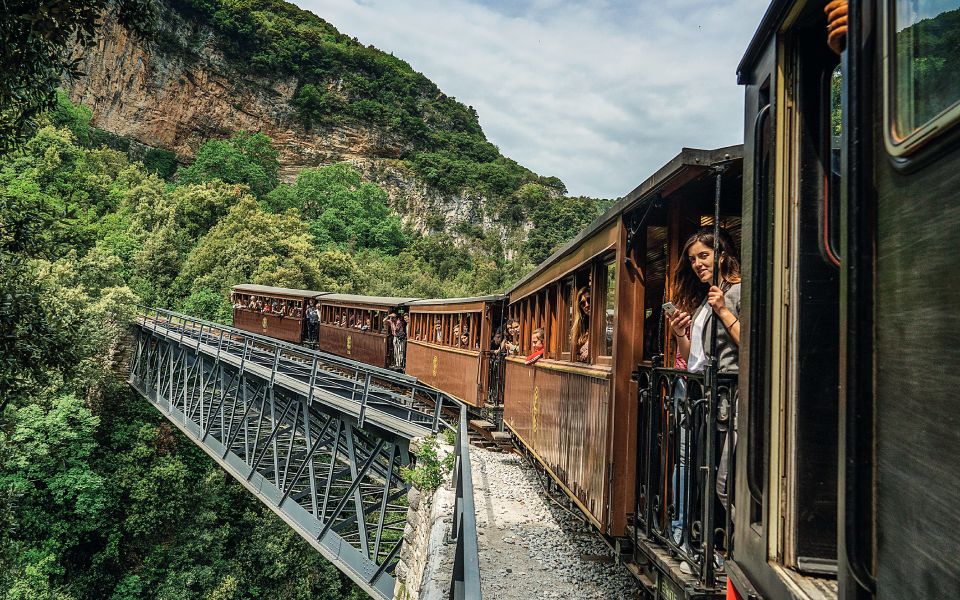EASTERN PILIO
Between the forest and the sea
Having visited the mountain several times for winter excursions, I wondered what Pilio (aka Pelion) would be like in July and August. In a word: cool.
In addition to the Olympian gods, who were rumored to have their summer home here, there are more than 30 villages offering us common mortals everything we might want for our summer holidays.
We made the most of our annual holidays with seaside jaunts, strolls around verdant and listed villages with enviable architecture, long, lazy coffees in squares shaded by ancient plane trees, and hikes along trails that lead to some of the most beautiful beaches in Greece.
In eastern Pilio, we immersed ourselves in green! Tsagarada has some wonderful family-run guesthouses, providing their visitors with personal care: the owners get to know you by name, and they’ll remember you if you return.
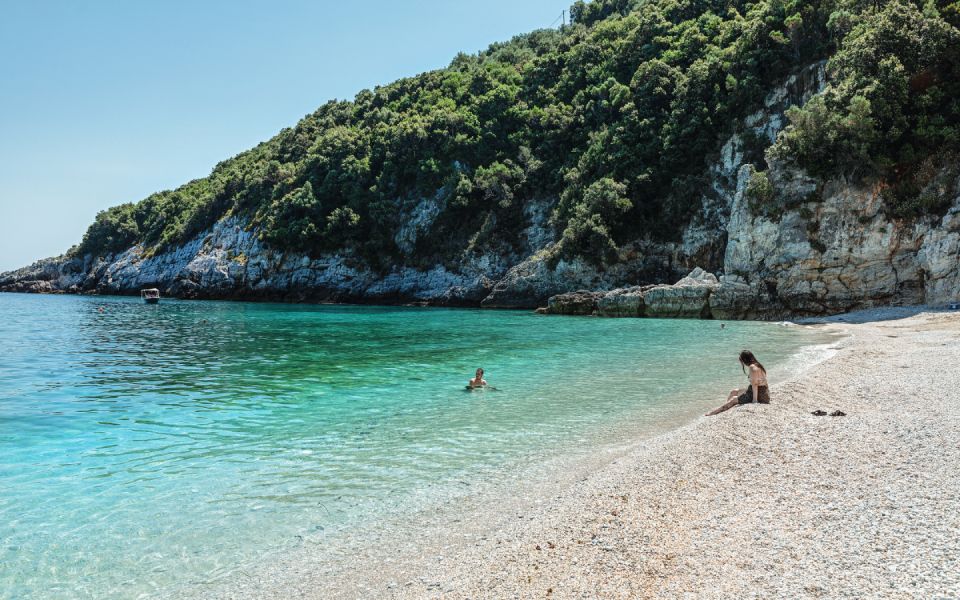
© Konstantinos Tsakalidis
It was this that brought us back to the sparsely populated village, which is built in a forest. It has four neighborhoods, four squares and four churches, with paths connecting the neighborhoods to one another.
Daytime in the village is spent in the squares, where visitors and locals alike gather together to enjoy good company, good food and, of course, good tsipouro (a grappa-like spirit). At night, you only need to take a few steps away from the lighted streets to see the star-studded sky and hear the calls of birds in a range of different tones.
On our very first day, after a hearty breakfast at the guesthouse Amanita, we arrived at the beach in around 15 minutes. Mylopotamos is a favorite beach of the locals, as well as the residents of Volos who have holiday homes in the area. The beach, with its turquoise waters, is divided in two by a massive rock. In the cool cave behind the beach, we took an afternoon nap on the damp sand, and that is a memory I come back to often, whenever I want to give my mind a rest.
The other nearby beach is Fakistra, which is harder to reach, along a trail that is straightforward but long. The waters of Fakistra reflect the trees that overhang almost half of the bay. A cypress-green sea.
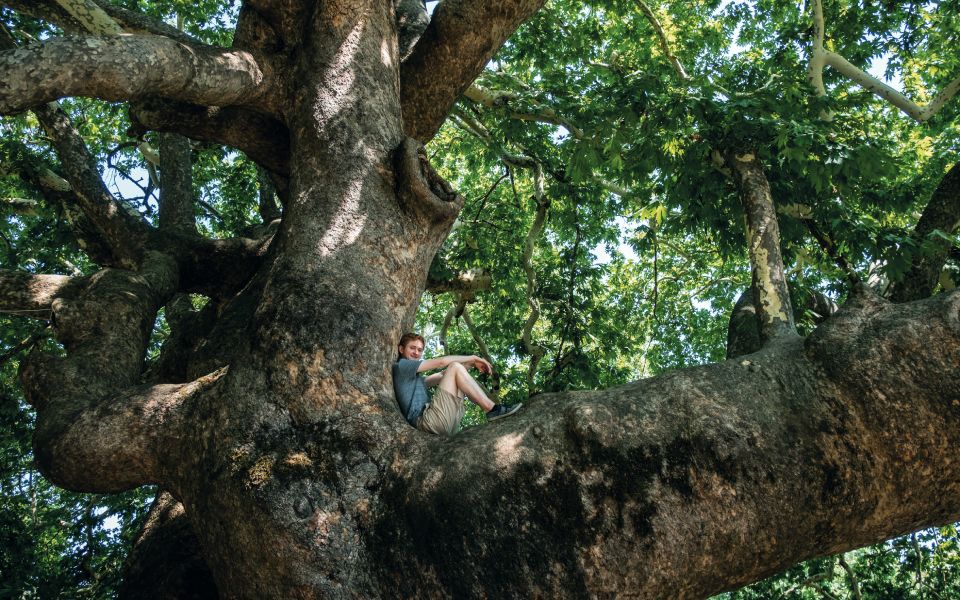
© Konstantinos Tsakalidis
On the following day, we went swimming at the sandy beach of Limnionas with its crystal-clear waters, close to Kato Xourichti, while the day after we met some friends with their families at Papa Nero, the most child-friendly local beach, a 2 km stretch of coast lined with tavernas and cafés.
At Ai Giannis, we parked the car and walked to Plaka, a beach with natural shade provided by oak and plane trees along the edges, and caves in lovely colors.
To the south, we had a swim at Lambinou and Kalamaki, and on the way back we ate masterfully grilled meat at the famous Germanos taverna in Neochori. We arrived at the best time of day, just before sunset, and by the time we finished our meal, we had seen the sky take on almost every shade of orange, purple and blue.
One morning we woke up very early, but totally refreshed after a good night’s sleep, and drove to Aghioi Saranta, Horefto and Parisena Beach. The latter serves as an open-air summer home for many campers. We stayed there until nightfall and swam amid bioluminescent plankton. Our bodies seemed to glow in the water.
On the way back up, we stopped at Zagora for dinner on the small terrace at Niki’s taverna (also known as Meintani).
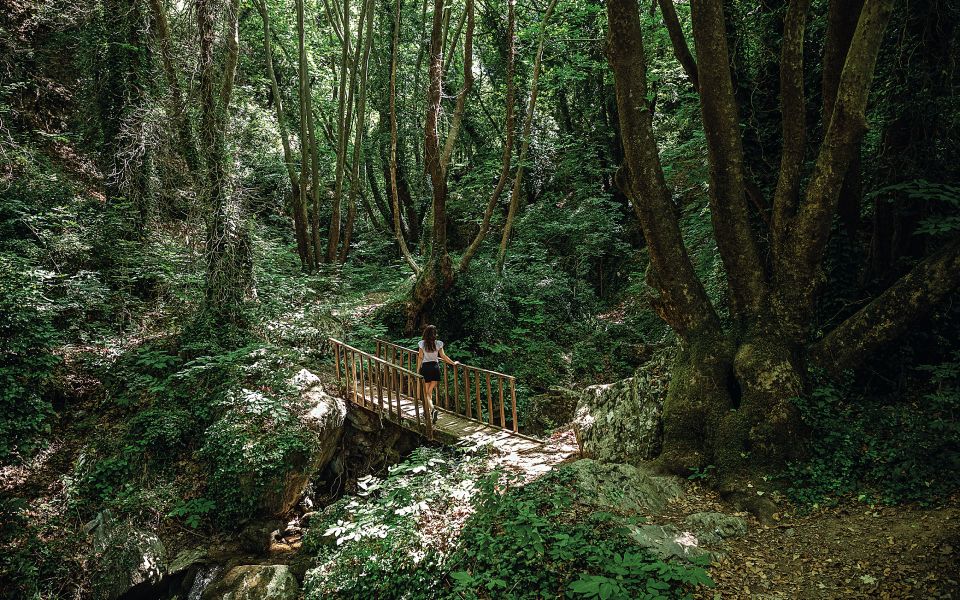
© Konstantinos Tsakalidis
On another day, under a cloudy sky, we decided to hike along the area’s most well-known trail, the one that connects Tsagarada to its old port and the only natural harbor in eastern Pilio, Damouchari.
It took us 90 minutes to walk the 4.5 km route at a comfortable pace. It is waymarked for the most part, goes through forests of tall trees, ivy and oaks, and offers two natural springs with potable water at the perfect temperature.
Our excursion to Aghia Kyriaki, the picturesque village at the end of the peninsula of Magnesia, lasted a whole day. The settlement has a very distinctive architecture: two-story houses with colorful facades, some with balconies, others without, as well as low fishermen’s cottages. It doesn’t quite look like a part of Pilio, but the journey to get there is steeped in green, along the sea, and the eye never wanders far from the beauty that the mountain is known for. – N.D.
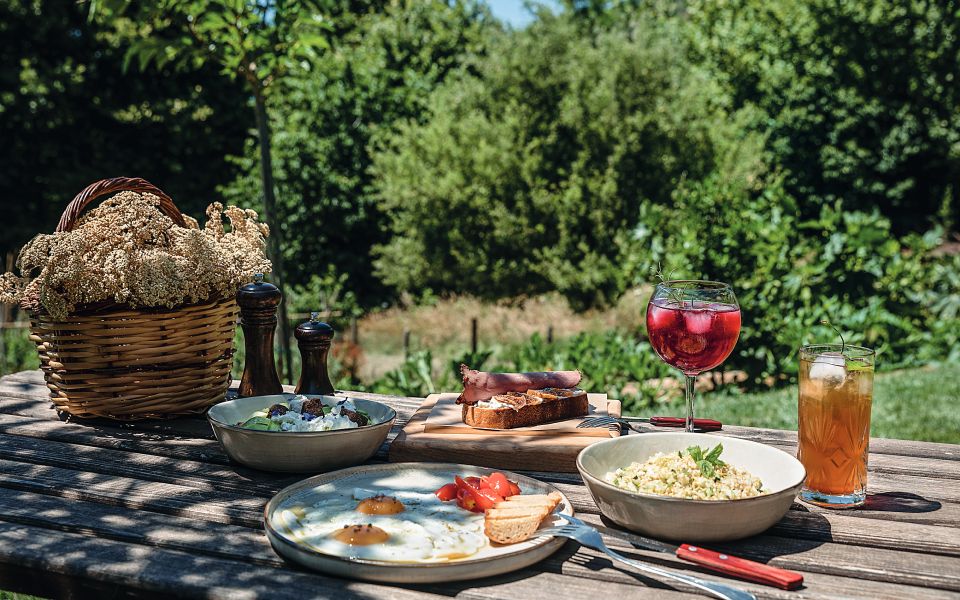
© Konstantinos Tsakalidis
WESTERN AND CENTRAL PILIO
Villages overlooking the Pagasetic Gulf
I’m always excited to reach the road that climbs above Volos, where the trees cast their shade and the air begins to cool. Come summer, this is the road I take to reach the mountain villages of Pilio. Just outside the city, it is time to make my choice: western Pilio for the views and the excellent food, or central Pilio for events and activities?
If I turn left, the first stop is Portaria, which probably owes its name to the fact that it’s one of the villages closest to Volos, thus serving as the “gateway” (porta) to Pilio. Its large square with its massive plane trees is the village’s center of activity. The restaurant Kritsa serves tasty traditional food under the trees; here I enjoy breakfast with homemade bread, soft galotyri cheese, pies with wild greens, and traditional sweet preserves, or local sausages, sautéed greens with eggs, and spetsofai, a dish made with sausages and peppers.
After eating, I stroll through the village admiring its stone buildings. Even though I’ve walked the route numerous times, I never tire of the Centaurs’ Path.
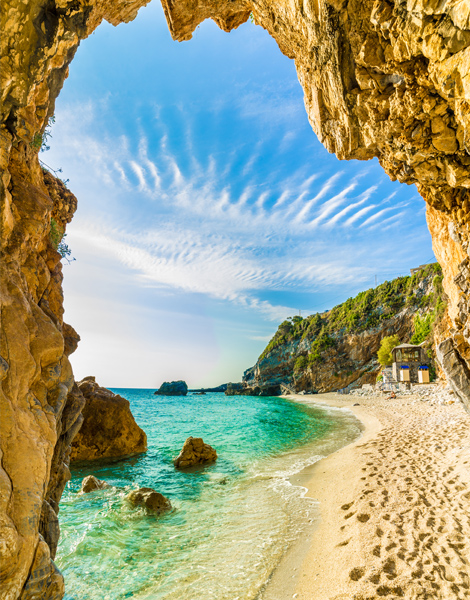
© Shutterstock
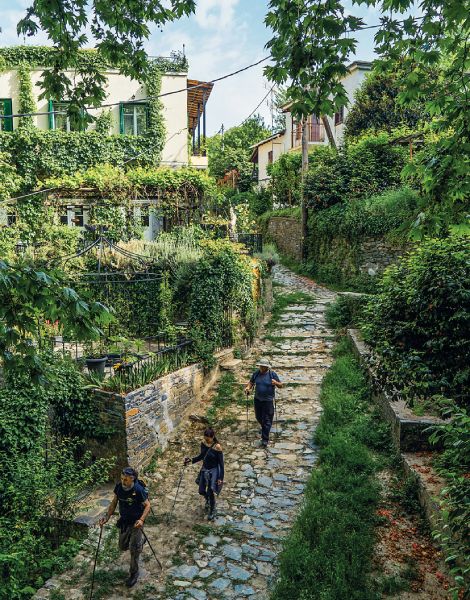
© Perikles Merakos
En route to Makrinitsa, I reach the spring of Adamena. A sign here marks the start of the trail that goes over streams and wooden bridges, passes by natural springs and circles back to Portaria, always under the shade of the trees, to end up at the little church of Aghia Marina. Some choose to hike it in reverse, starting from Aghia Marina, but I prefer to head straight into the forest.
The next village over, Makrinitsa, has justifiably been described as “the balcony of Pilio,” since its views of Volos and the Pagasetic Gulf are unique. In the square under the plane trees there is a marble fountain with four bronze lion heads; legend has it that its water confers immortality.
Here, you will also find the renowned traditional coffeehouse Theophilos, which is named after the painter Theophilos Hatzimihail, who in 1910 created the mural inside titled “The Battle in Krya Vrysi”.
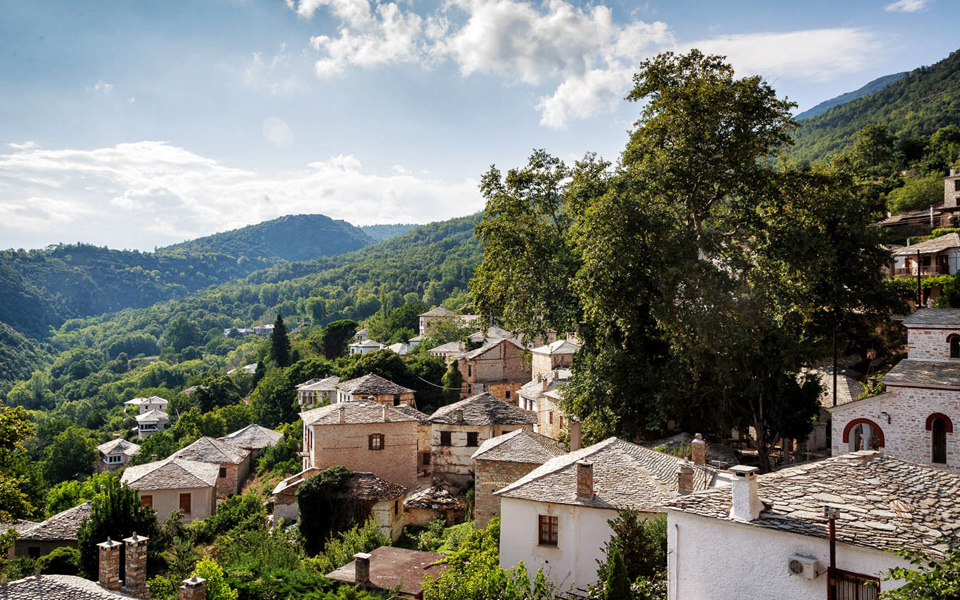
© Yadid Levy
It isn’t often that I’ll come to Pilio and not grab the opportunity to take the train from Ano Lechonia to Milies: it’s one of the most enjoyable things you can do in the area. The journey lasts one and a half hours, departing on Saturdays and Sundays at 10:00, and returning from Milies at 15:00.
The charming little train runs along track just 60 cm wide and goes through tunnels and over stone bridges – like the one just before Milies, built by Evaristo de Chirico, father of the acclaimed painter Alberto Savinio.
My final stop is the village of Aghios Lavrentios, where every August the alleyways are flooded with music, as part of Music Village, a multifaceted festival for musicians, with parallel events for the public, which has been running for the past ten years.
This year, the festival will be a more limited affair due to the measures to prevent the spread of Covid-19, but music will once again be heard in the village’s open-air spaces. Meet you there? – L.K.

